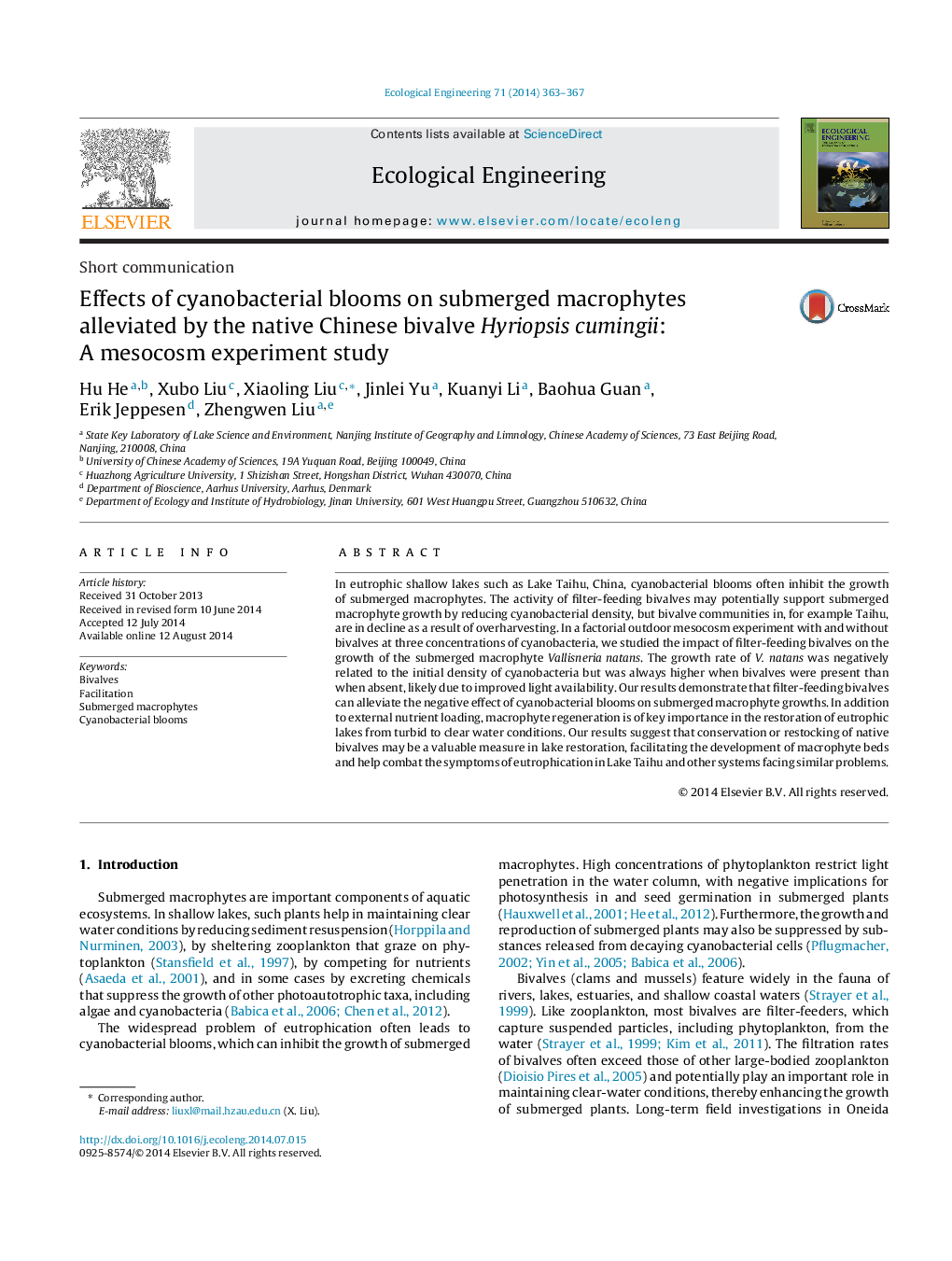| Article ID | Journal | Published Year | Pages | File Type |
|---|---|---|---|---|
| 4389172 | Ecological Engineering | 2014 | 5 Pages |
In eutrophic shallow lakes such as Lake Taihu, China, cyanobacterial blooms often inhibit the growth of submerged macrophytes. The activity of filter-feeding bivalves may potentially support submerged macrophyte growth by reducing cyanobacterial density, but bivalve communities in, for example Taihu, are in decline as a result of overharvesting. In a factorial outdoor mesocosm experiment with and without bivalves at three concentrations of cyanobacteria, we studied the impact of filter-feeding bivalves on the growth of the submerged macrophyte Vallisneria natans. The growth rate of V. natans was negatively related to the initial density of cyanobacteria but was always higher when bivalves were present than when absent, likely due to improved light availability. Our results demonstrate that filter-feeding bivalves can alleviate the negative effect of cyanobacterial blooms on submerged macrophyte growths. In addition to external nutrient loading, macrophyte regeneration is of key importance in the restoration of eutrophic lakes from turbid to clear water conditions. Our results suggest that conservation or restocking of native bivalves may be a valuable measure in lake restoration, facilitating the development of macrophyte beds and help combat the symptoms of eutrophication in Lake Taihu and other systems facing similar problems.
